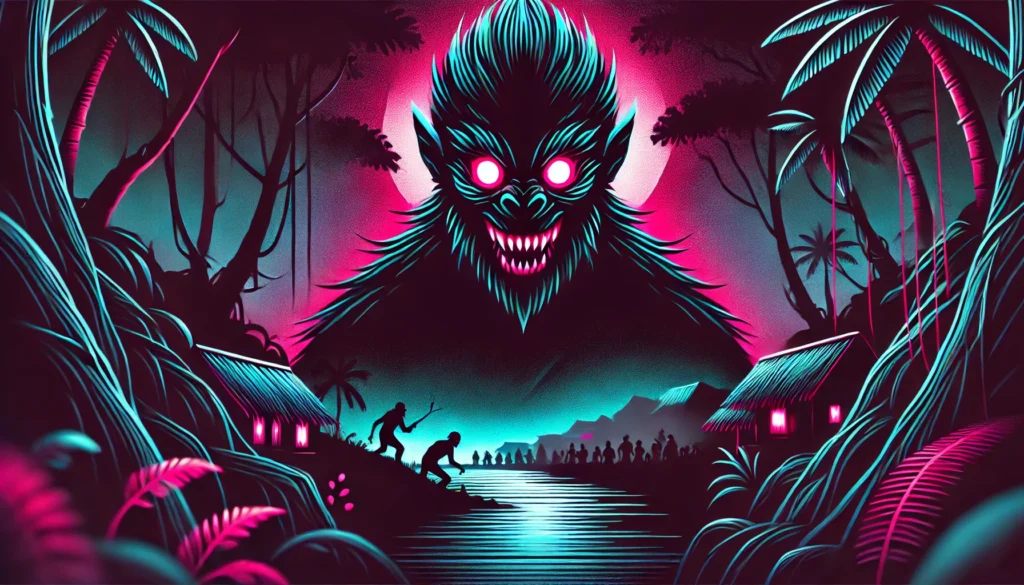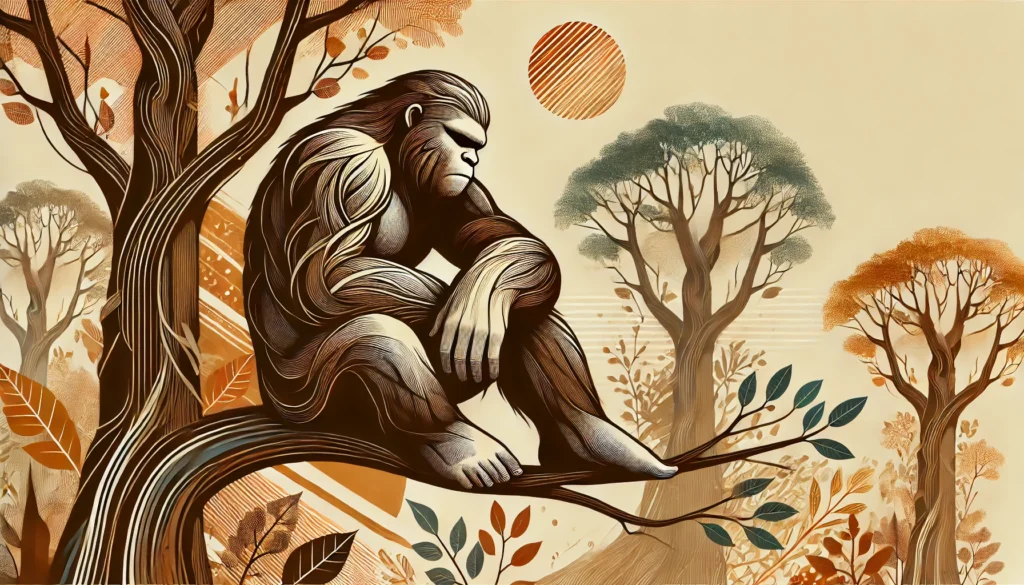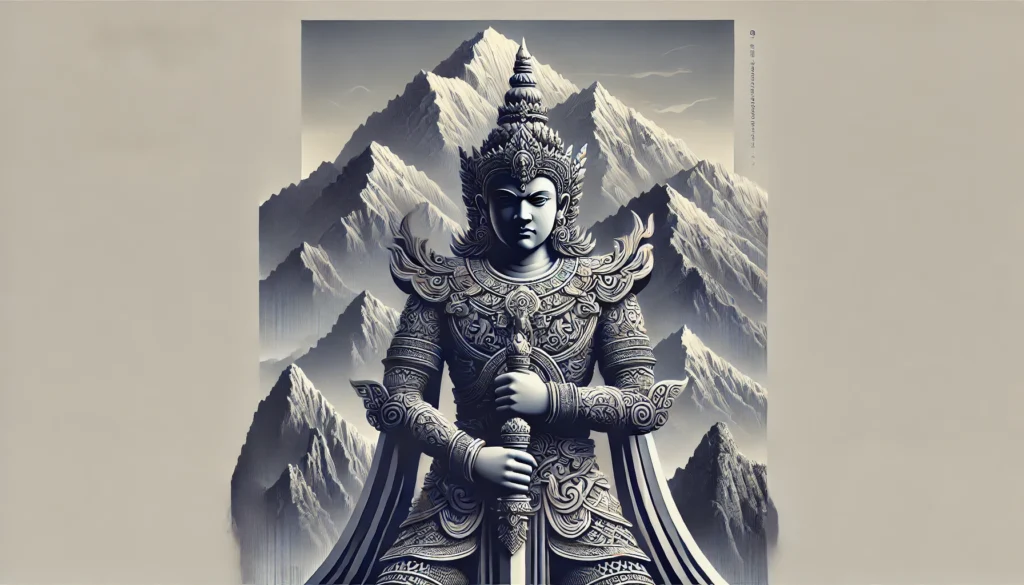Growing up in the heart of the Visayas, I’ve always been fascinated by the rich tapestry of folklore that blankets our islands. From the hushed whispers of elders to the animated storytelling sessions during brownouts, tales of supernatural beings have been an integral part of our cultural heritage. Among these stories, none have captured the imagination quite like the aswang and its otherworldly cohorts. In this blog, we’ll dive deep into the eerie world of Visayan folklore, exploring the chilling tales of aswangs and other mystical creatures that have both terrified and intrigued generations of Filipinos.
As we embark on this journey through the supernatural landscape of the Visayas, prepare to be captivated by stories that have been passed down through generations. These tales aren’t just mere entertainment; they’re a window into the beliefs, fears, and values of our ancestors. From the shape-shifting aswang to the mischievous duwende, each creature in Visayan folklore serves as a reflection of our collective psyche and the unique cultural tapestry of our region.
The Aswang: Visayas’ Most Feared Supernatural Entity
What is an Aswang?
At the pinnacle of Visayan folklore stands the aswang, a creature so deeply ingrained in our culture that its mere mention can send shivers down the spines of even the most skeptical individuals. But what exactly is an aswang? In essence, it’s a shape-shifting creature of the night, often described as a combination of vampire, ghoul, and witch. The term “aswang” itself is believed to have originated from the Sanskrit word “asura,” meaning demon or evil spirit.
The aswang is not a single, uniform entity but rather a category of supernatural beings with various manifestations. In the Visayas, the most common depiction is that of a seemingly normal person by day who transforms into a bloodthirsty monster at night. This duality is perhaps what makes the aswang so terrifying – the idea that anyone in your community could potentially be harboring a dark, monstrous secret.
Characteristics and Abilities
The abilities attributed to aswangs are as diverse as they are frightening. Here’s a table summarizing some of their most commonly cited powers:
| Ability | Description |
|---|---|
| Shape-shifting | Can transform into animals like dogs, cats, or birds |
| Flight | Able to fly, often using banana leaves as wings |
| Superhuman strength | Possesses strength far beyond that of normal humans |
| Invisibility | Can become invisible or blend into surroundings |
| Long, tubular tongue | Used to suck blood or fetus from pregnant women |
| Corpse-eating | Known to feast on dead bodies in cemeteries |
These abilities make the aswang a formidable and terrifying creature in Visayan folklore. The idea of a neighbor or acquaintance potentially possessing such powers has led to countless sleepless nights and cautionary tales passed down through generations.
Famous Aswang Stories from the Visayas
One of the most chilling aswang tales I’ve heard comes from my lola (grandmother) in Capiz, a province often jokingly referred to as the “Aswang Capital of the Philippines.” She spoke of a beautiful young woman who lived on the outskirts of their barrio. This woman was known for her charm and kindness, always ready with a smile for her neighbors. However, strange occurrences began to plague the village – livestock going missing, the eerie sound of wings flapping in the night, and most disturbingly, a pregnant woman who claimed something was trying to suck her unborn child from her womb.
Suspicion fell on the young woman when a local farmer claimed to have seen her transform into a large bird-like creature one moonlit night. The villagers, armed with bolos and torches, confronted her. To their horror, she began to change before their eyes, her face contorting and her body twisting into an inhuman shape. The tale ends with the aswang fleeing into the night, never to be seen again, but leaving behind a legacy of fear that persists to this day.
This story, like many others, serves as both a cautionary tale and a reflection of societal fears. It warns against trusting appearances too readily and highlights the vulnerability felt by pregnant women in a time when maternal mortality rates were high.
Beyond the Aswang: Other Supernatural Creatures in Visayan Folklore
While the aswang may be the most notorious, Visayan folklore is teeming with a diverse cast of supernatural beings. Each of these creatures has its own unique characteristics and stories, contributing to the rich tapestry of our mythological landscape.
Duwende: The Mischievous Little People
In my childhood, I often heard warnings about the duwende, small elf-like creatures believed to inhabit the natural world around us. These diminutive beings are said to live in mounds of earth, old trees, or even in the corners of houses. While some duwende are believed to be benevolent, others are known for their mischievous or even malevolent nature.
I remember my uncle’s tale of his encounter with a duwende. He was a carpenter and was tasked with cutting down an old acacia tree. As he began his work, he suddenly felt dizzy and disoriented. He claimed to have heard tiny voices warning him to stop. Recognizing the signs of duwende presence, he quickly apologized to the unseen beings and left the tree untouched. From that day on, he always made sure to ask permission before cutting any tree or disturbing any mound of earth.
This story, like many involving the duwende, reflects the deep respect for nature ingrained in Visayan culture. It serves as a reminder to live in harmony with our environment and to approach the natural world with reverence and caution.
Sigbin: The Bizarre Blood-Sucking Creature
Another intriguing creature in Visayan folklore is the sigbin, a animal-like being that defies easy classification. Described as having the body of a small goat or dog, the sigbin is said to have unusual features such as large ears that it can clap together and a long, whip-like tail. What makes the sigbin particularly terrifying is its supposed habit of sucking human blood through the shadow of its victim.
In my hometown, there was a period when a series of unexplained animal deaths occurred. Livestock were found drained of blood, with no visible wounds. The older members of the community whispered that it was the work of a sigbin. They advised everyone to be indoors by sunset and to hang garlic and ginger around their homes – believed to be effective deterrents against the creature.
The sigbin legend showcases the Visayan tendency to attribute unexplained phenomena to supernatural causes. It also highlights the importance of community in facing these perceived threats, as people banded together to protect one another from the unseen danger.
Wakwak: The Flying Terror
The wakwak is another flying creature in Visayan folklore, often confused with the aswang due to their similar abilities. However, the wakwak is distinctly characterized by the sound it makes – a loud “wak-wak” cry that grows fainter as it approaches its prey, contrary to what one might expect.
I recall a story from my childhood about a wakwak that terrorized a small coastal village. Fishermen reported hearing the creature’s cry while out at sea, growing increasingly panicked as the sound seemed to draw closer despite becoming fainter. The village was gripped with fear, with people refusing to go out after dark. The terror only subsided when a brave albularyo (traditional healer) performed a ritual to banish the wakwak.
This tale, like many others involving the wakwak, speaks to the fears associated with the unknown and the unseen. It also underscores the important role that traditional healers and spiritual leaders play in Visayan communities, often being called upon to address supernatural threats.
The Cultural Significance of Visayan Folklore
Preservation of Values and Social Norms
The supernatural tales of the Visayas are more than just stories to frighten children or entertain adults during long, dark nights. They serve as powerful vehicles for transmitting cultural values and enforcing social norms. Many of these stories carry moral lessons or cautionary messages that reflect the values held dear by Visayan society.
For instance, the shape-shifting nature of the aswang serves as a warning against deception and the dangers that may lurk beneath a benign exterior. It encourages vigilance and caution in one’s dealings with others. Similarly, stories of the duwende often emphasize the importance of respecting nature and seeking permission before disturbing the natural world – a value that aligns closely with the traditional Filipino concept of “pakikisama” or harmonious coexistence.
These tales also often reinforce the importance of community and family bonds. In many stories, it is through collective action and mutual support that communities are able to overcome supernatural threats. This reflects the high value placed on bayanihan (communal unity) in Filipino culture.
Reflection of Historical and Social Realities
Visayan folklore, like all mythology, is not created in a vacuum. It often reflects the historical and social realities of the time and place in which it originated. The prevalence of blood-sucking creatures like the aswang and sigbin, for example, might be linked to the high maternal and infant mortality rates in earlier times. These stories provided a supernatural explanation for tragedies that were otherwise difficult to comprehend or accept.
Similarly, the emphasis on nocturnal creatures in Visayan folklore speaks to the very real dangers that existed after dark in earlier times. In an era before electricity, when wild animals and bandits posed genuine threats, these stories served as a way to keep people safe by encouraging them to remain indoors at night.
Impact on Daily Life and Practices
The belief in these supernatural entities has had a tangible impact on daily life in many Visayan communities. Even today, in some areas, you might observe practices that stem directly from these folkloric beliefs. Here’s a table summarizing some common practices:
| Practice | Associated Belief | Purpose |
|---|---|---|
| Hanging garlic and ginger | Repels aswangs and other evil spirits | Protection |
| Avoiding whistling at night | Attracts supernatural beings | Avoid unwanted attention |
| Asking permission before cutting trees | Respect for duwende | Avoid supernatural retribution |
| Placing a broom upside down behind the door | Prevents aswangs from entering | Home protection |
| Avoiding going out during Holy Week | Increased supernatural activity | Personal safety |
These practices, while they may seem superstitious to outsiders, are deeply ingrained in Visayan culture and continue to be observed by many, especially in rural areas.
The Evolution of Visayan Folklore in Modern Times
Impact of Education and Technology
As education became more widespread and technology advanced, one might expect beliefs in supernatural creatures to wane. However, the reality is more complex. While there has been a decline in literal belief, especially in urban areas, these stories continue to hold cultural significance and captivate imaginations.
In my own experience, I’ve noticed a shift in how these tales are perceived. When I was a child, many of my peers genuinely feared the aswang and other creatures. Now, as an adult, I see a more nuanced approach. While few of my contemporaries would claim to literally believe in these beings, there’s still a respect for the stories and what they represent.
The internet and social media have also played a role in the evolution of these beliefs. Online forums and social media groups dedicated to Philippine folklore have sprung up, allowing people to share stories and experiences. This has led to a kind of modern mythmaking, where traditional tales are reinterpreted and new urban legends are born.
Representation in Media and Popular Culture
Visayan folklore, particularly stories of the aswang, have found new life in popular media. Films, television shows, and books have adapted these tales for modern audiences. The 2004 film “Sigaw” (The Echo), which features an aswang-like entity, gained international recognition and was even remade for American audiences.
In literature, authors like Cyan Abad-Jugo have incorporated elements of Visayan folklore into their works, introducing these stories to a new generation of readers. Comic books and graphic novels have also embraced these mythical creatures, with series like “Trese” gaining popularity both in the Philippines and abroad.
This media representation has had a dual effect. On one hand, it has helped preserve these stories and introduce them to a wider audience. On the other, it has sometimes led to a homogenization of folklore, blending distinct regional variations into a more generic “Filipino mythology.”
Folklore in Tourism and Cultural Preservation
Interestingly, Visayan folklore has also become a draw for tourism in recent years. Capiz, despite (or perhaps because of) its reputation as the “Aswang Capital,” has embraced this aspect of its folklore in its tourism campaigns. The annual “Aswang Festival” in Capiz, which ran from 2004 to 2007, celebrated this dark folklore while simultaneously demystifying it.
Cultural preservation efforts have also focused on documenting and studying Visayan folklore. Universities and cultural institutions have undertaken projects to record oral traditions, ensuring that these stories are not lost as older generations pass on. The National Commission for Culture and the Arts (NCCA) has been instrumental in these efforts, recognizing the importance of folklore in the broader tapestry of Filipino cultural heritage.
The Enduring Legacy of Visayan Folklore
As we’ve journeyed through the supernatural landscape of the Visayas, from the terrifying aswang to the mischievous duwende, it’s clear that these stories are more than just tales to frighten children. They are a vibrant part of our cultural heritage, reflecting our history, values, and collective psyche.
In an increasingly globalized world, where Western pop culture often dominates, these uniquely Visayan stories serve as a link to our roots. They remind us of the rich, complex culture that has shaped our islands and our people. While belief in the literal existence of these creatures may be waning, the lessons they impart and the cultural identity they represent remain as relevant as ever.
As a Visayan, I feel a deep connection to these stories. They are not just part of our past, but continue to shape our present and future. Whether whispered around campfires, adapted into blockbuster movies, or studied in academic institutions, the supernatural creatures of Visayan folklore continue to captivate and inspire.
So the next time you hear a strange sound in the night or feel an unexplained chill down your spine, remember – you might just be experiencing a piece of living folklore. And who knows? Perhaps the aswang, duwende, and their supernatural kin are still out there, lurking in the shadows of our modern world, waiting for their next story to be told.
Disclaimer: This blog post is based on folkloric accounts and popular beliefs up to 2016. It is intended for entertainment and cultural education purposes only. The supernatural entities described herein are part of Visayan folklore and not meant to be interpreted as factual. If you notice any inaccuracies in the cultural or historical information presented, please report them so we can correct them promptly.




